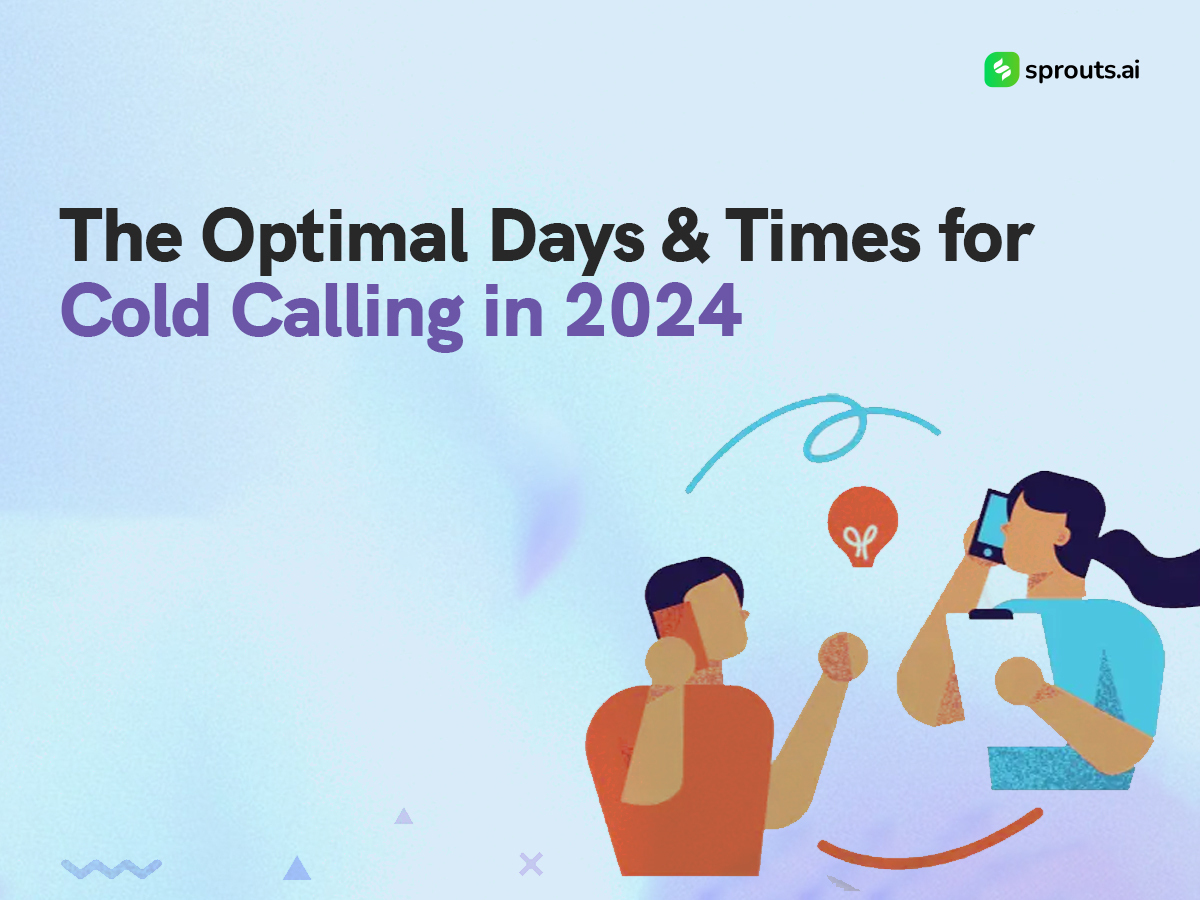Cold calling remains a staple in the sales process, despite the rise of digital marketing strategies.
Cold calling, when done strategically, is a powerful tool to cut through the noise and connect with decision-makers directly. The key? Perfect timing. As businesses adapt, so do their buying habits. By analyzing recent trends, we can pinpoint the exact moments your message will resonate most, ensuring it lands in the right ears at the perfect time. Let’s get started and discover the secrets to 2024’s optimal cold calling windows, backed by fresh data.
Understanding the Cold Call
Before diving into the specifics, it’s important to understand the current environment of cold calling. With professionals inundated with calls and messages, standing out requires strategic timing. The goal is to reach potential clients when they’re most receptive, which is where data comes into play. Time is a precious commodity; hence, cold calling has shifted towards a more data-centric approach. This means leveraging analytics to understand not just who your potential clients are, but also when they are most likely to engage. It’s about respecting the client’s time and your own by making informed decisions on when to initiate contact. As we adapt to latest business trends, these insights become critical in crafting a cold calling strategy that aligns with the modern professional’s work-life rhythm.
The Best Days to Cold Call
According to a study by CallHippo, the middle of the week is the sweet spot for cold calls. Tuesday, Wednesday, and Thursday have been identified as the optimal days.
The logic behind this is straightforward. Mondays are typically reserved for planning the week ahead and catching up on tasks. Fridays, on the other hand, are when people wind down and plan for the weekend. The mid-weekdays strike the perfect balance when professionals are in full work mode but not yet overwhelmed by the week’s demands. Thus, the midweek days provide a window where individuals are more likely to be receptive to new opportunities and discussions. It’s also beneficial to consider the natural workflow of your target audience, making calls at times when they’re likely to be at their desks and available to talk.
The Best Times to Cold Call
When it comes to the time of day, late mornings and late afternoons are your best bet. A study by Revenue.io suggests that late morning, between 9:30 and 11 a.m., is an ideal time slot, especially for reaching key decision-makers. This is the time when most professionals have settled into their workday and are more likely to engage in conversations.
Late afternoons, particularly between 4 to 5 p.m., are also effective. This is when people start wrapping up their tasks and may be more open to discussing new opportunities. However, it’s crucial to avoid the lunch hour and the very end of the workday when people are either out of the office or preparing to leave.
Tailoring Your Approach
Customizing your cold calling strategy to align with the unique habits and schedules of your target demographic is crucial. While general patterns provide a starting point, the real success lies in personalizing your efforts. For example, if your prospects are entrepreneurs or CEOs, they might prefer early morning calls as they prepare for their day. Conversely, managers and directors could be more responsive post-lunch when they’ve tackled urgent morning tasks.
Understanding the industry-specific peaks and troughs can also guide you to choose the right moments for connection. For industries like finance or law, where mornings are hectic, scheduling calls during the calmer afternoon hours might yield better engagement.
Leveraging Technology
Embracing modern sales technologies can significantly streamline the process of cold calling. Customer Relationship Management (CRM) systems and automated dialing solutions are more than just tools; they’re your allies in optimizing outreach. They can analyze data to predict the best times for calls, automate dialing to increase efficiency, and even provide insights on the best-performing scripts.
Integrating these technologies with your sales strategy allows for a more systematic approach, ensuring that no potential lead is missed. By leveraging analytics, you can continuously refine your calling schedule, adapting to trends and patterns that emerge over time, thus maximizing the impact of your cold calling efforts.
The collective insights gathered throughout 2024 reinforce the notion that the heart of the workweek—Tuesday to Thursday—coupled with the transition from late morning to late afternoon, stands out as the prime window for initiating cold calls. This timeframe is not arbitrarily chosen; it is rooted in a pattern of professional behavior that sees individuals more settled into their work rhythm and potentially more amenable to discussion and new propositions.
It is imperative to recognize that these are merely guidelines sculpted from aggregated data and should not be perceived as inflexible mandates. The essence of effective cold calling transcends rigid schedules; it requires a nuanced understanding of your target audience’s preferences, behaviors, and professional cadence. This understanding enables you to tailor your approach, ensuring that your outreach resonates with the recipient’s current mindset and circumstances.
To truly excel in cold calling, one must blend the wisdom of these general patterns with a personalized strategy that considers the unique characteristics of each prospect. It’s about striking the right chord at the right moment—a harmonious balance between data-driven timing and human-centric customization. By doing so, you elevate your cold calling endeavors from a game of numbers to a strategic art form, thereby enhancing the likelihood of meaningful engagement and, ultimately, the success of your cold calling campaigns. Remember, the goal is not just to reach out but to connect, engage, and create opportunities for growth and collaboration.

